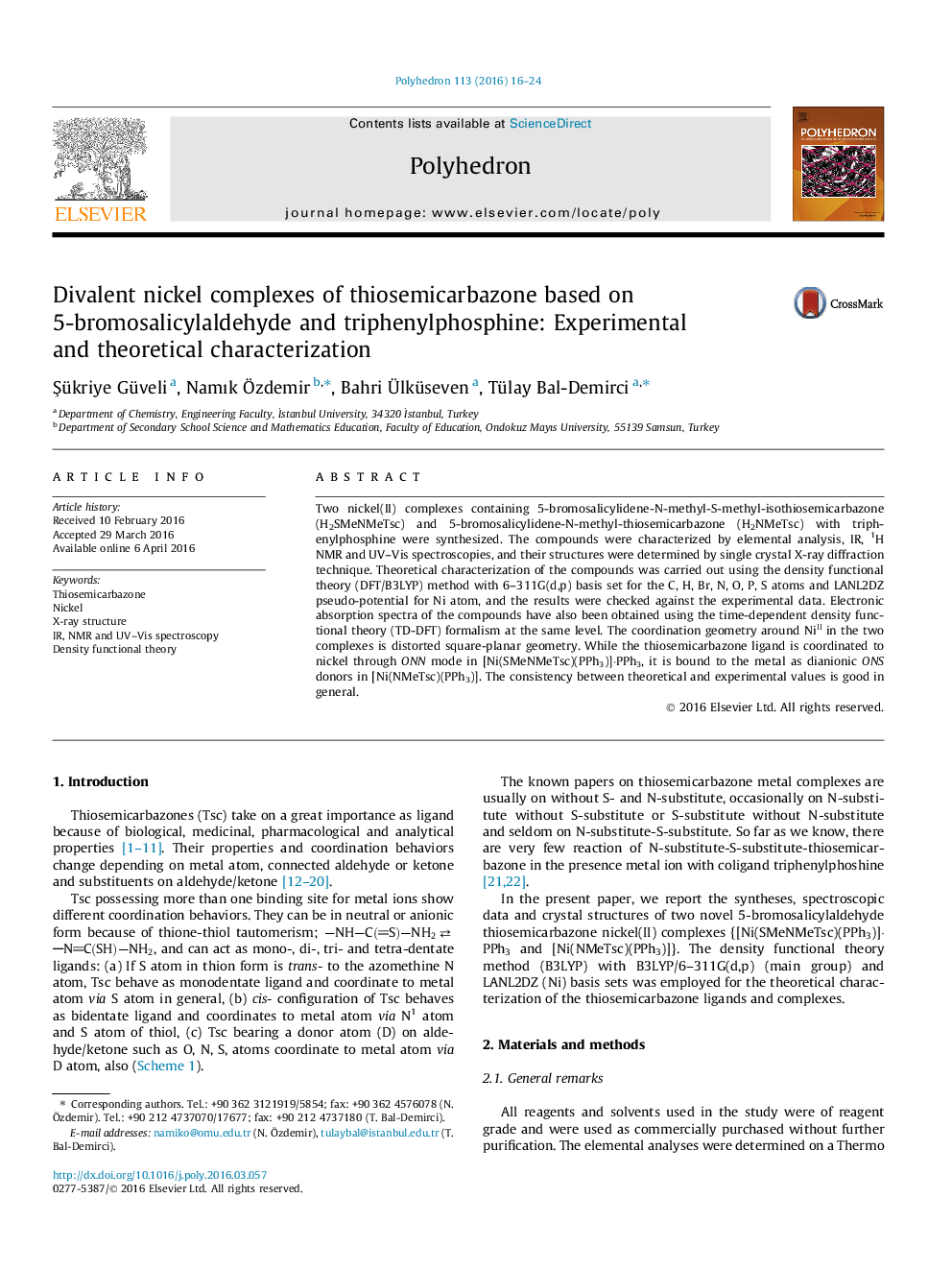| کد مقاله | کد نشریه | سال انتشار | مقاله انگلیسی | نسخه تمام متن |
|---|---|---|---|---|
| 1334234 | 1500227 | 2016 | 9 صفحه PDF | دانلود رایگان |

Two nickel(II) complexes containing 5-bromosalicylidene-N-methyl-S-methyl-isothiosemicarbazone (H2SMeNMeTsc) and 5-bromosalicylidene-N-methyl-thiosemicarbazone (H2NMeTsc) with triphenylphosphine were synthesized. The compounds were characterized by elemental analysis, IR, 1H NMR and UV–Vis spectroscopies, and their structures were determined by single crystal X-ray diffraction technique. Theoretical characterization of the compounds was carried out using the density functional theory (DFT/B3LYP) method with 6–311G(d,p) basis set for the C, H, Br, N, O, P, S atoms and LANL2DZ pseudo-potential for Ni atom, and the results were checked against the experimental data. Electronic absorption spectra of the compounds have also been obtained using the time-dependent density functional theory (TD-DFT) formalism at the same level. The coordination geometry around NiII in the two complexes is distorted square-planar geometry. While the thiosemicarbazone ligand is coordinated to nickel through ONN mode in [Ni(SMeNMeTsc)(PPh3)]·PPh3, it is bound to the metal as dianionic ONS donors in [Ni(NMeTsc)(PPh3)]. The consistency between theoretical and experimental values is good in general.
The reactions of 5-bromo-salicylaldehydethiosemicarbazone-based ligands with triphenylphosphine gave two stable complexes with dark red colours. The magnetic moments of the complexes are in the range 0–0.02 B.M. showing diamagnetic character of nickel(II). The compounds were characterized by means of elemental analysis, IR, 1H NMR and UV–Vis spectroscopies, and their crystal structures have been determined by X-ray crystallography. Theoretical characterization of the complexes were achieved using the DFT method, and the findings are compared with the experimental ones.Figure optionsDownload as PowerPoint slide
Journal: Polyhedron - Volume 113, 27 July 2016, Pages 16–24